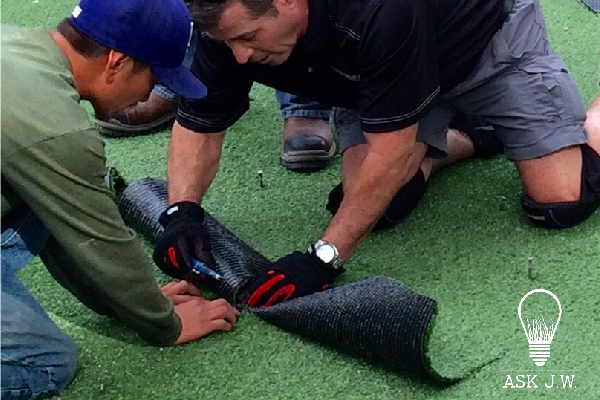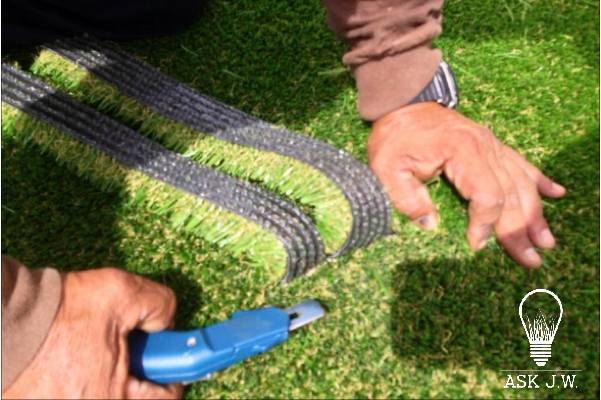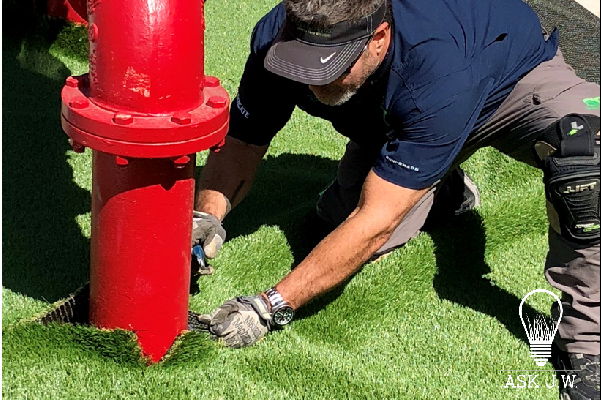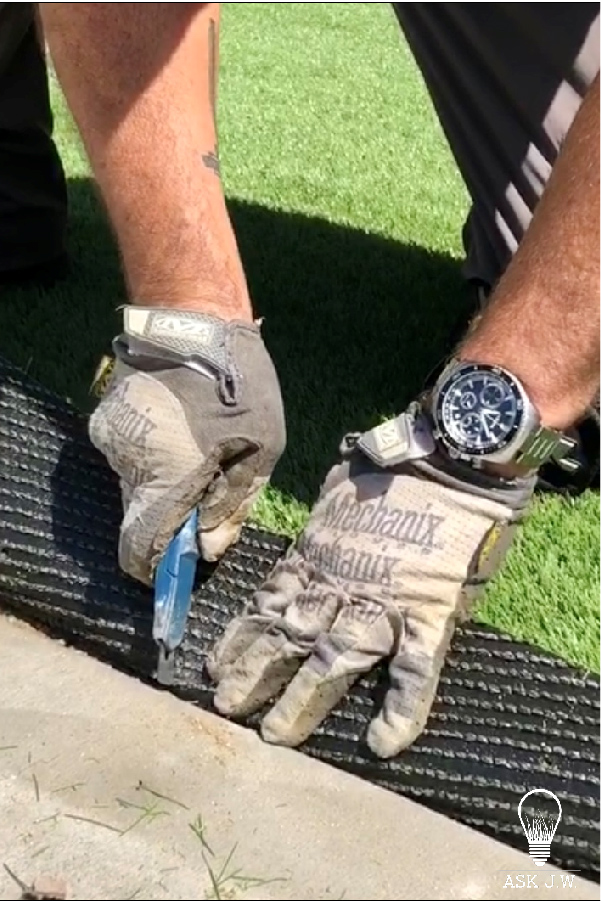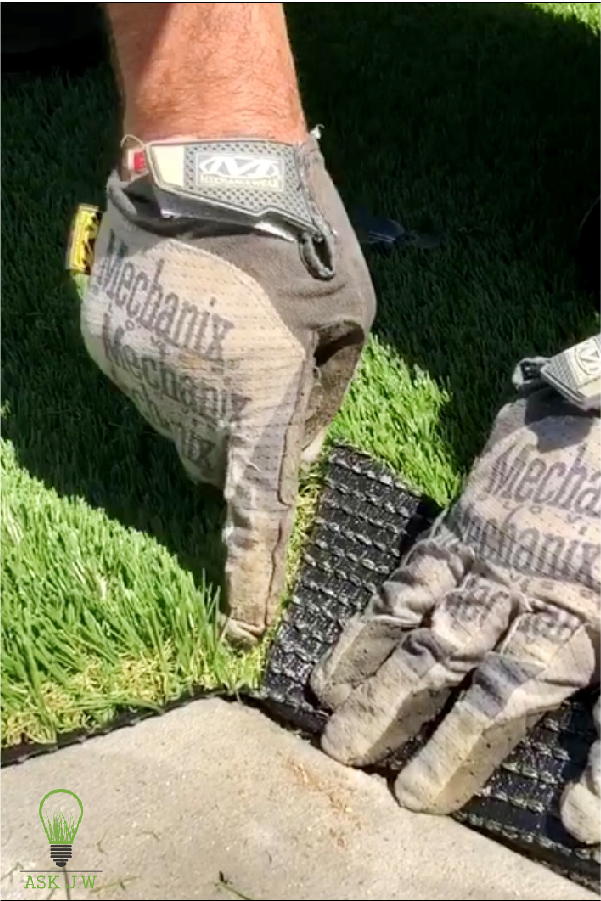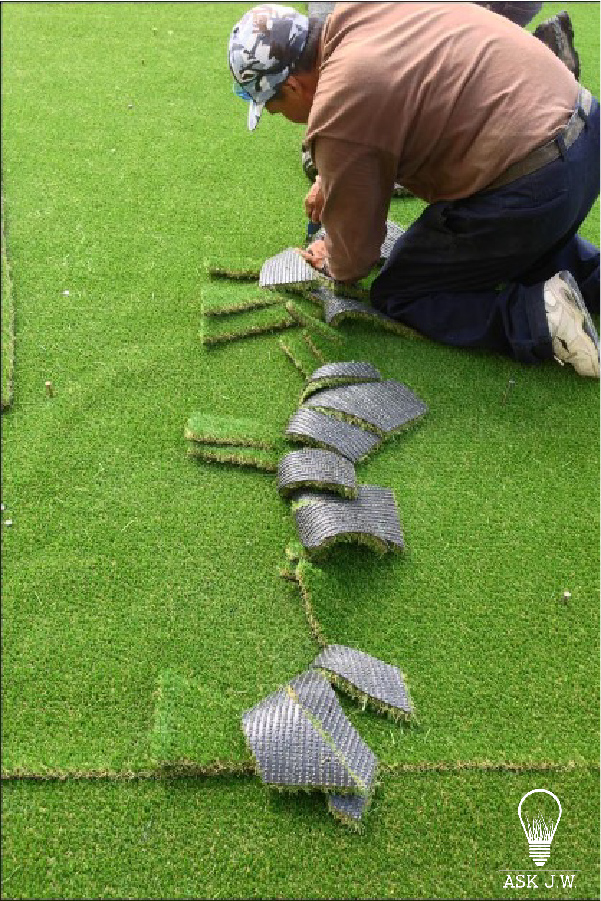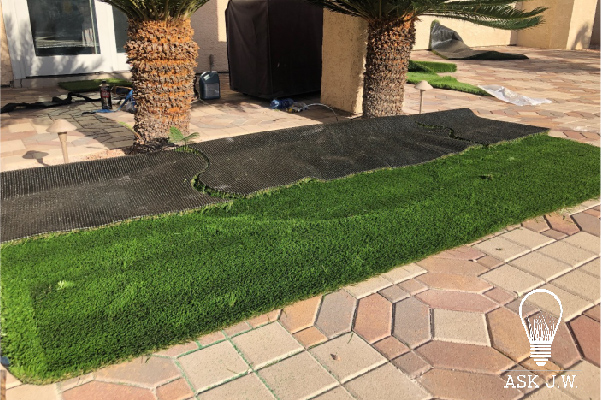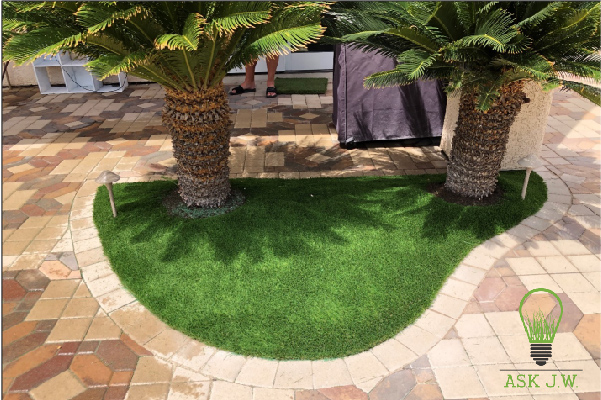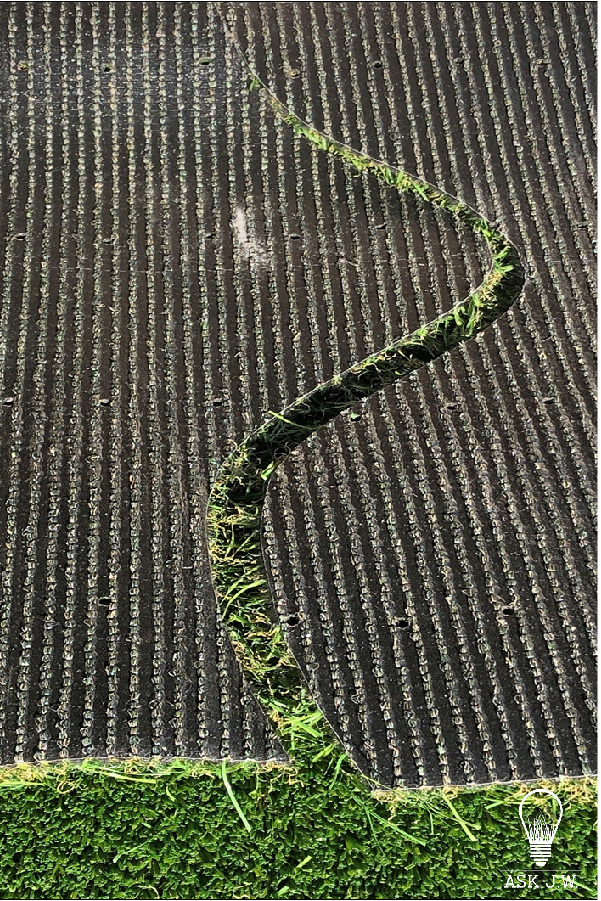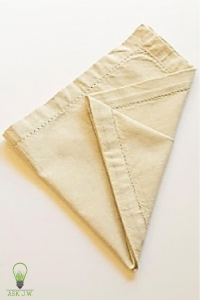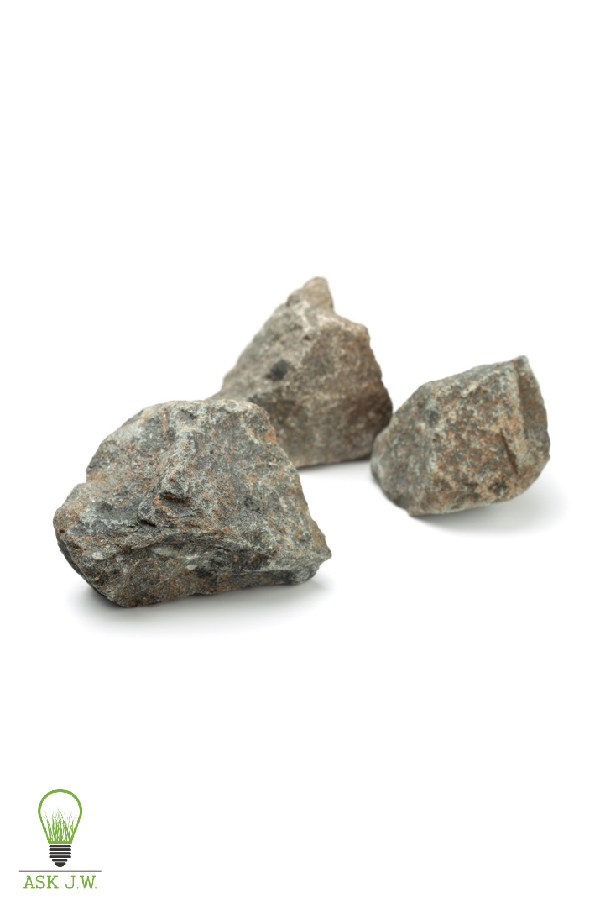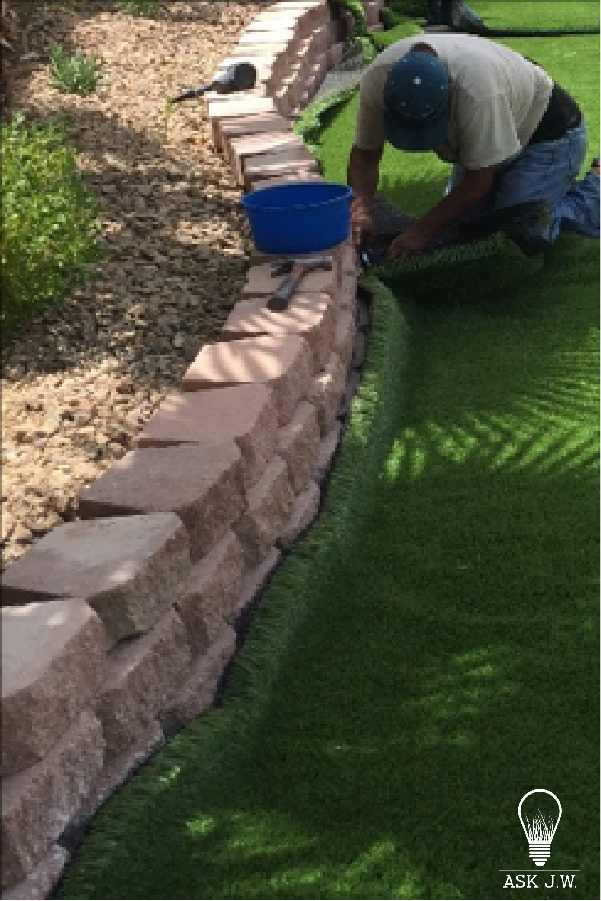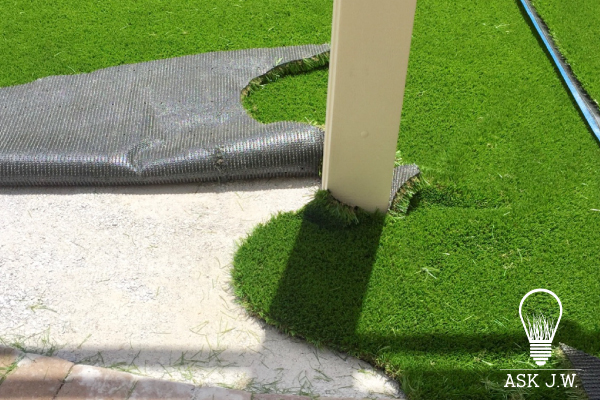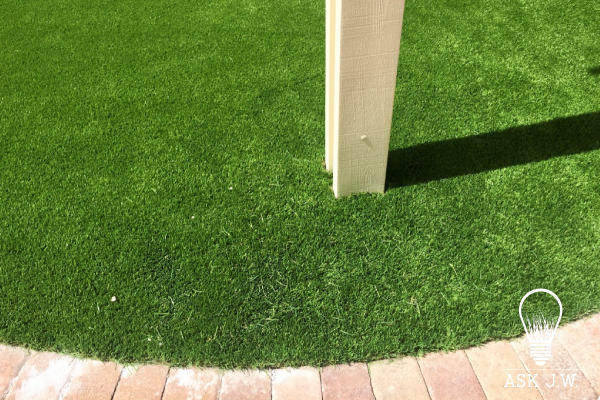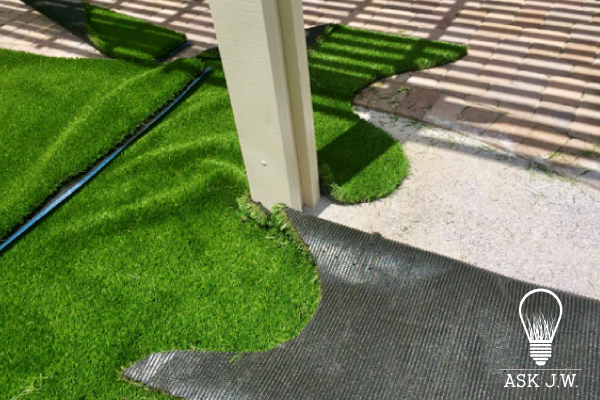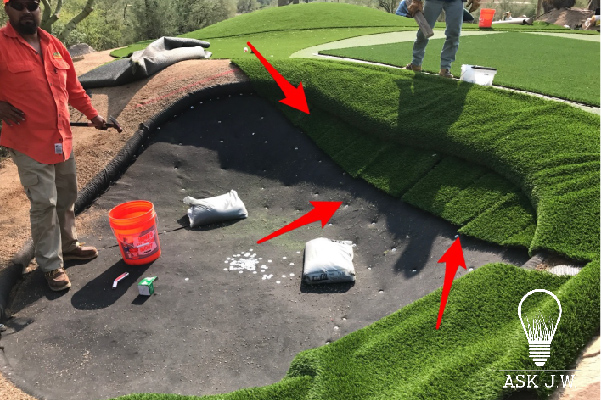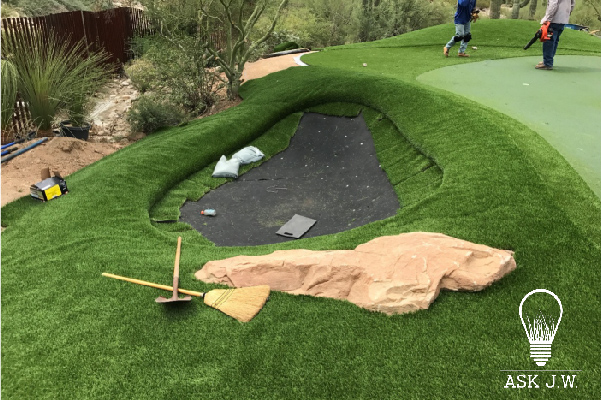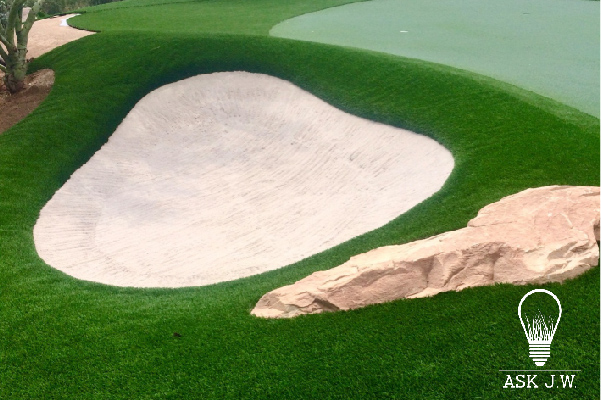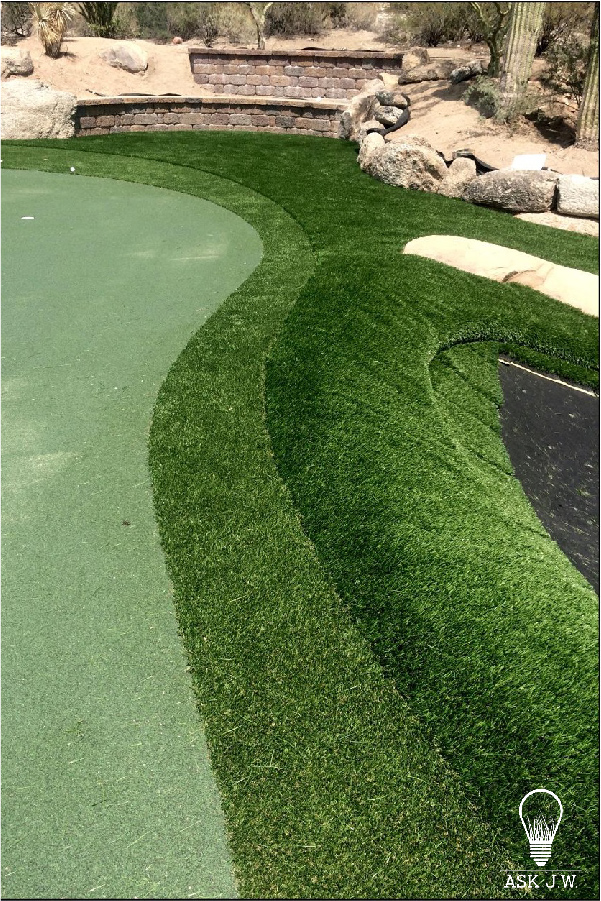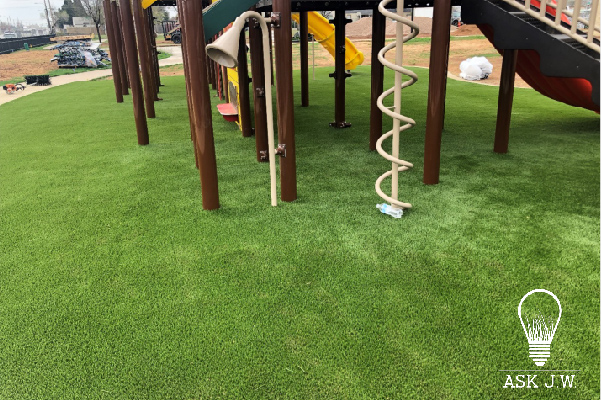Handling, working, and cutting synthetic turf can be difficult at times, especially when it’s cold out. There will be times that synthetic turf can be stubborn when you’re trying to wrap, conform, and place sections around certain objects. The “relief cut” is the very first cut I teach installers when preparing them for a synthetic turf installation career.
A relief cut is where you take a turf knife and cut or slice into the backing of synthetic turf to relieve some of the pressure from being folded. This allows the turf to conform and lay smoothly on the compacted base.
Seam Integration
Applying the relief cut when integrating seams is a must. The more relief cuts you make, the easier the turf is to handle while cutting the seam into place. The relief cut works best on head seams. Cutting in seams requires patience, skill, and craftsmanship.
Vegetation
When cutting around vegetation, I recommend cutting a “serpentine relief”. This is similar to the superseam technique. This technique will hide the cut or seam when you integrate together. The superseam tool will not be needed for small relief cuts. Your skills as a craftsman will prevail.
Pull back the turf as if folding a napkin. Take the point of the knife blade and cut from the edge of the fold in an “S” pattern to the end of the section. Fold back the left and right sections around the vegetation stalk. Cut multiple relief cuts around the stalk so that the turf will lay flat to the surface. You may then cut a circle around the vegetation to create a well for air and water so the vegetation stays healthy. Seam the relief cut with SGW seaming tape and Superseam Pro 444 adhesive.
Trees
When placing turf around rocks and boulders, you will need to make relief cuts within the crevices to allow the turf to lay flat and conform around the rock’s perimeter. This may require making multiple cuts regardless of size.
Pavestone Retainer Border/Walls
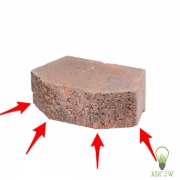 It is imperative that you have enough team members to achieve successful seam installations. If you are short in manpower, you will be short in quality. Most landscape synthetic turf needs ballast and Infill. I recommend using the infill bags (50lbs) to compress your seamline. Having enough help will allow the “bag man” to camouflage the seam with the JW bagging trick mentioned below.
It is imperative that you have enough team members to achieve successful seam installations. If you are short in manpower, you will be short in quality. Most landscape synthetic turf needs ballast and Infill. I recommend using the infill bags (50lbs) to compress your seamline. Having enough help will allow the “bag man” to camouflage the seam with the JW bagging trick mentioned below.
Column & Poles
I love the challenge of integrating synthetic turf in areas that will be of focus. The rule of thumb in the turf industry is to minimize seams, especially in focal points and high traffic areas. Sometimes you have no choice. The images above show a patio cover column that will be in the view of the client. The columns were placed inside the turf area, which caused the turf to be cut around it to meet the patio. Creating an invisible seam that will have longevity is crucial. I recommend using the serpentine method around columns and poles for integrating the seam. This will hide the seam, give stability, and prevent the straight-line mohawk.
Sand Traps
Placing turf around sand traps and bunkers can be difficult. Depending on design, the turf may need to be tucked and/or curled over the edge of the trap to create a “bullnose” effect. To achieve this, it will take manipulation of the turf and will require multiple relief cuts. Making more relief cuts will lessen the chance for wrinkles that will not brush out. Be careful not to make too many relief cuts, as that will reduce the stability of the bullnose. For more information on building sand and grass traps please visit the links below.
https://syntheticgrasswarehouse.com/askjw/installing-synthetic-turf-bunkers-part-1/
Playgrounds
Placing turf around playground equipment can be a challenge. Most playgrounds have multiple poles that will need to be cut around. I recommend making small relief cuts and keeping them tight to the poles. Any gaps due to large relief cuts may appear over time with high foot traffic.
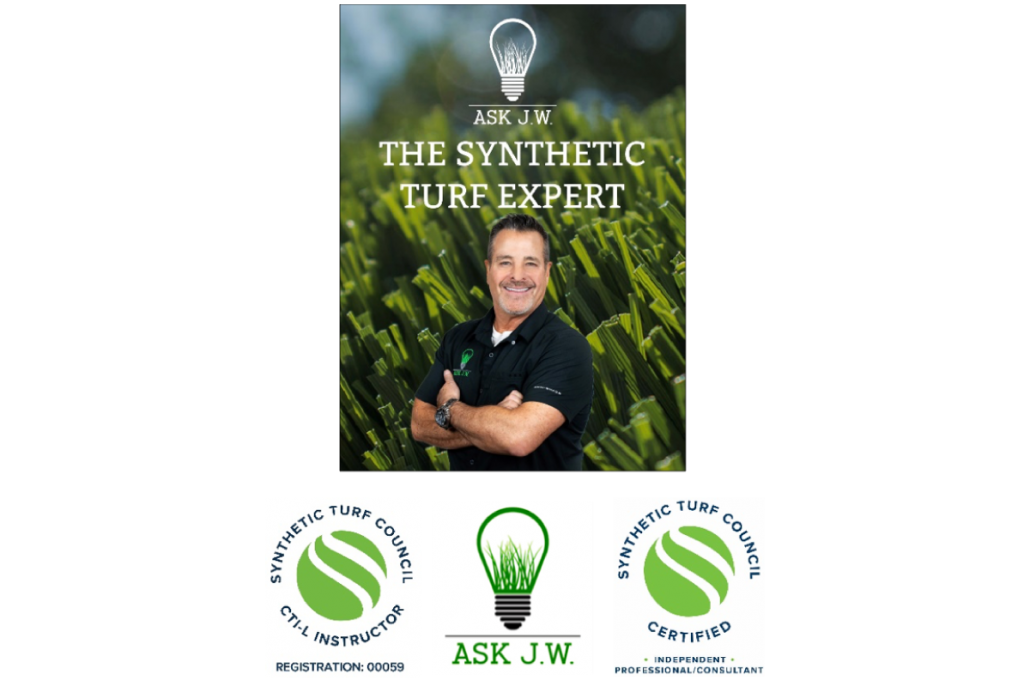
I’m glad I can be a part of your synthetic turf journey and teach methods that will assist in the success of your synthetic turf career. Once you have learned how to execute the relief cut method in your daily installations, you will see how much time, money, and material waste you are saving.
For more information regarding the relief cut, or to schedule a training, please contact J.W. at 888.846.3598 or email AskJW@SGWcorp.com
Suggestions for the use of Ask JW installation techniques are solely at the end users’ discretion; however, the user should determine suitability for the intended use by his/her own evaluation. Because the use of the materials is beyond our control, neither Ask JW nor SGW shall be liable for the outcome of any use of said materials including any injury, loss, or damage, direct or consequential, arising out of the use or inability to use these techniques and products.
